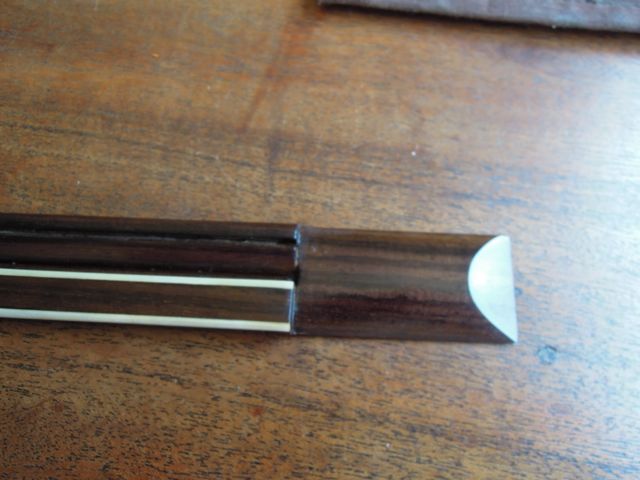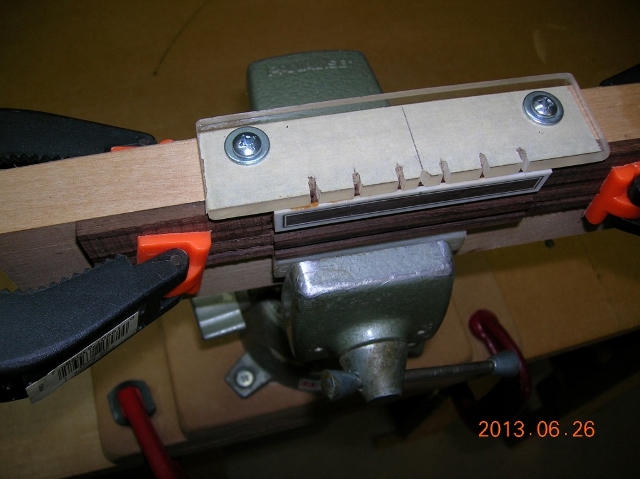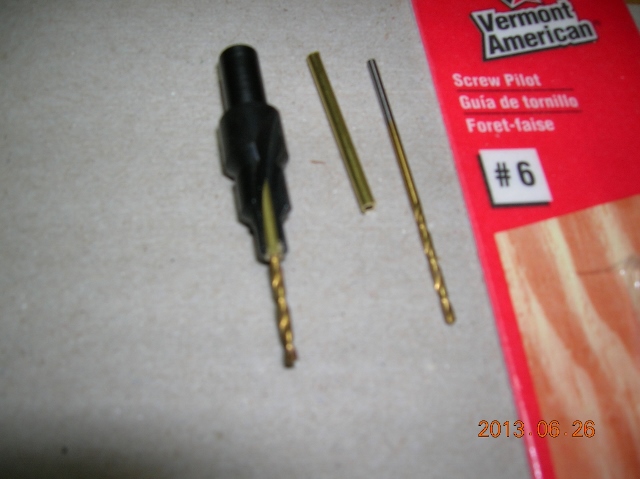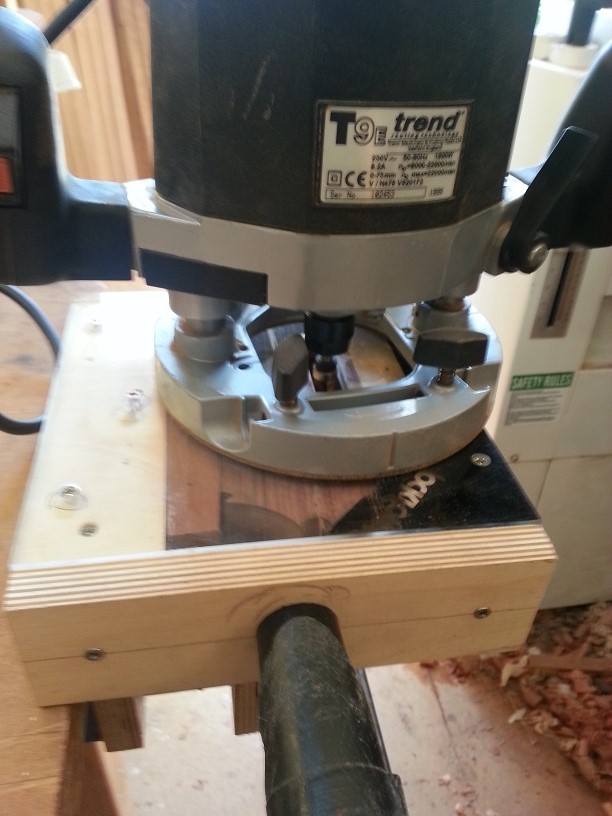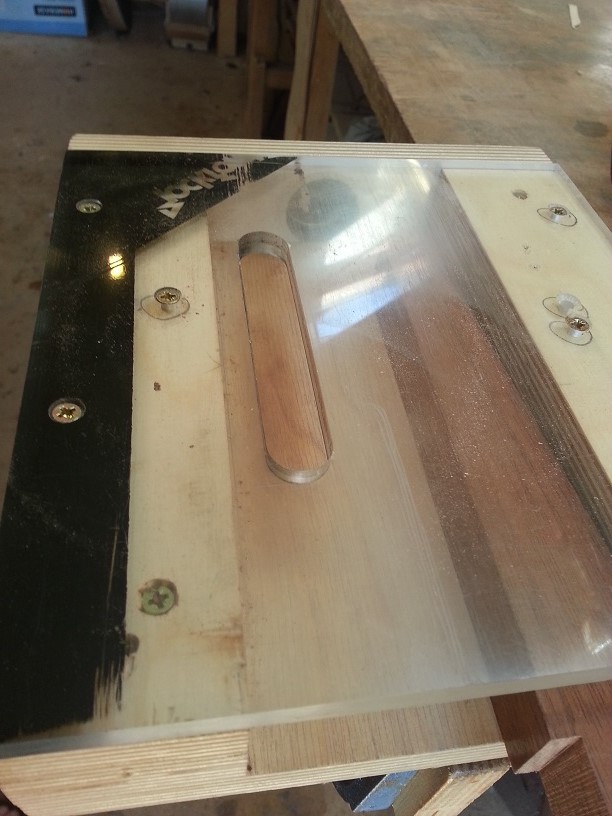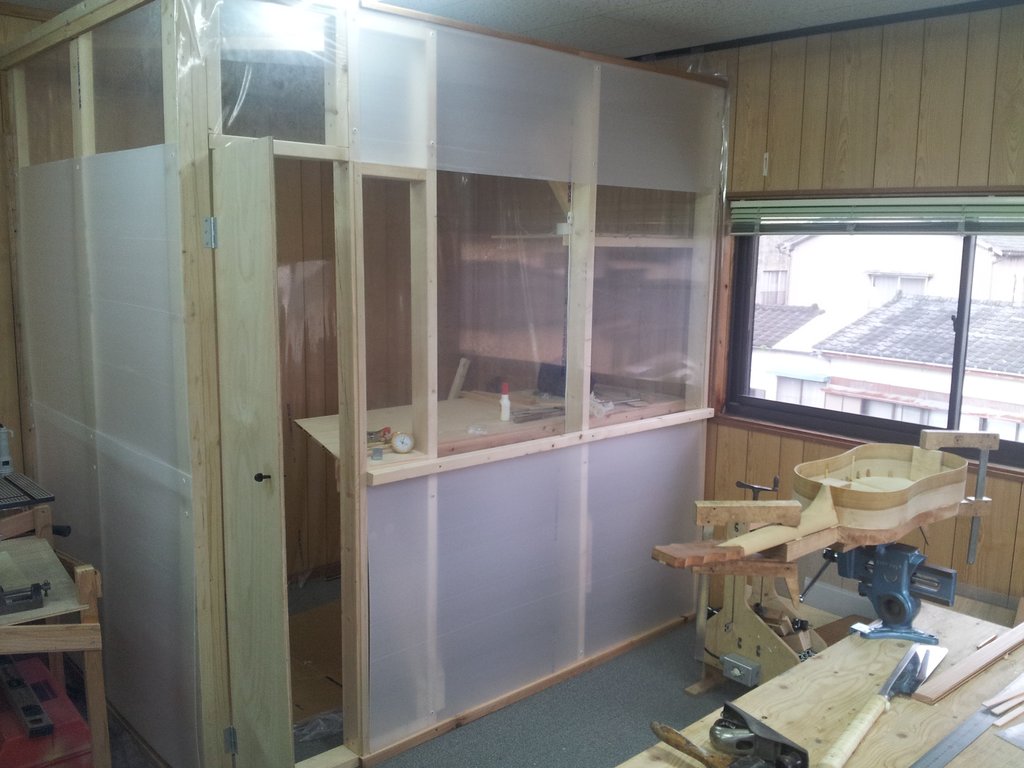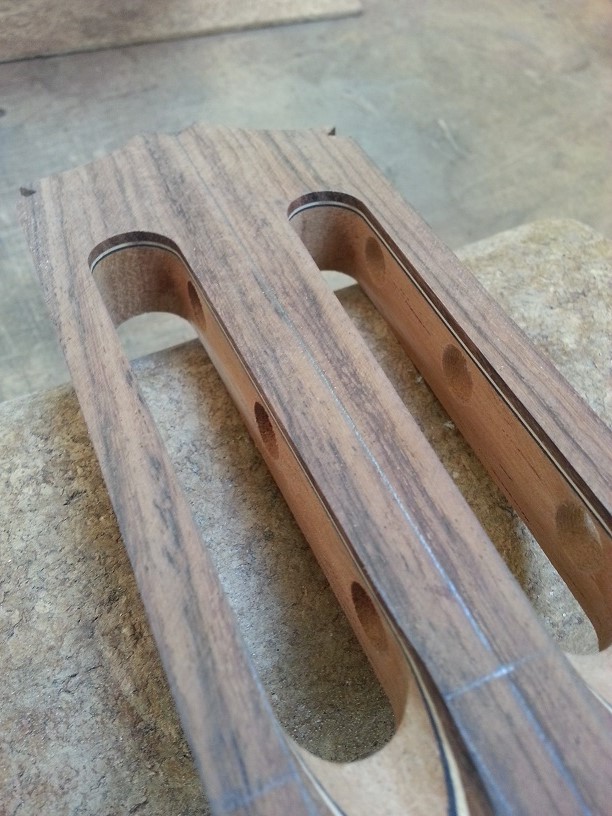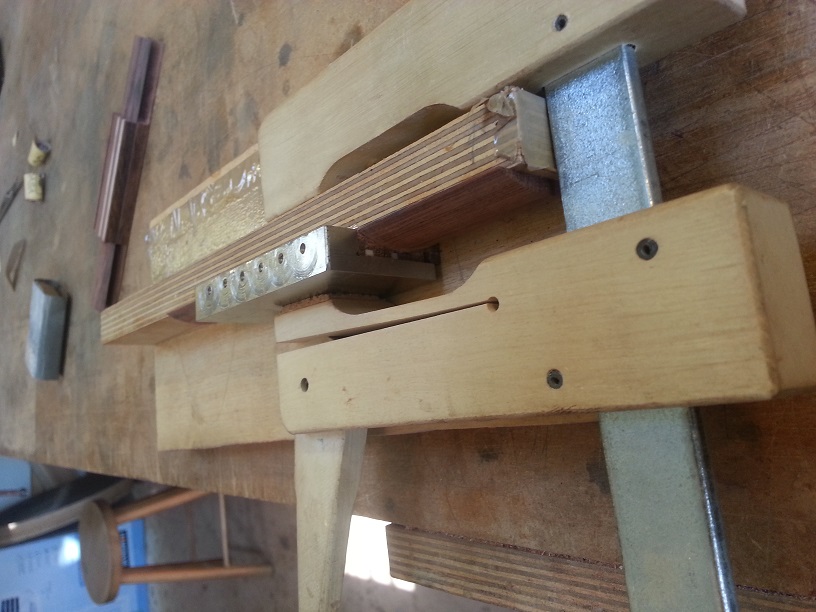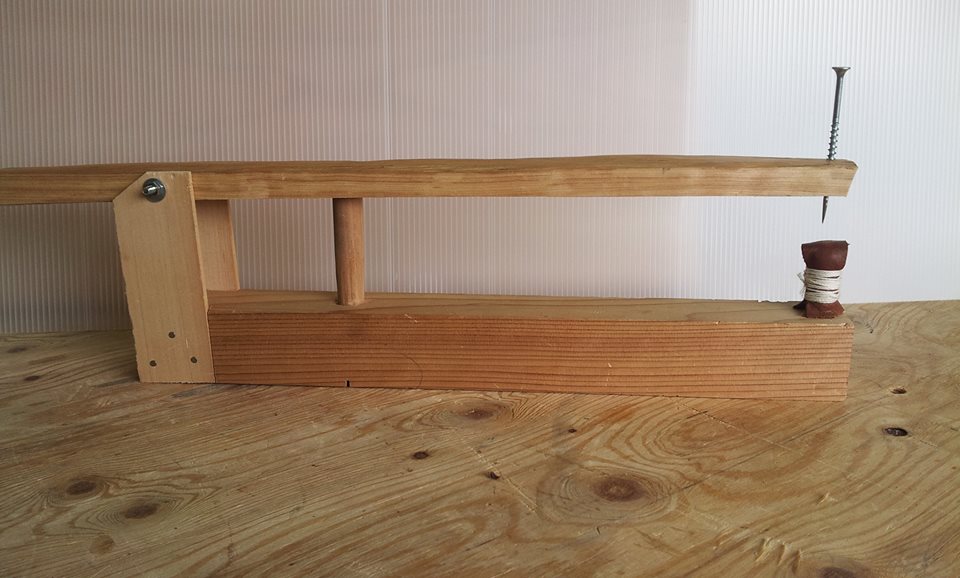|
constructordeguitarras -> RE: Luthiers Share Tool Ideas (Jul. 7 2013 13:09:46)
|
Lately I have been using some tools that are so ridiculously simple that they don't warrant photos. I have found that to trim things to a straight line--for example after I have bandsawn the long edges of a fingerboard close to the pencil lines--the fastest and easiest way to do it is to clamp a sufficiently long, 3"-wide, piece of 3/4" MDF to the line with spring clamps, place it in a vise, and use the wide, square edge of the MDF to rest part of the block plane on while I plane. This helps me get the edge of the FB both straight and square really fast. I do the same thing with a shorter length of MDF for the straight sections of my head crest and the sides of the head. I am always amazed that I did this much less efficiently before.
|
|
|
|
